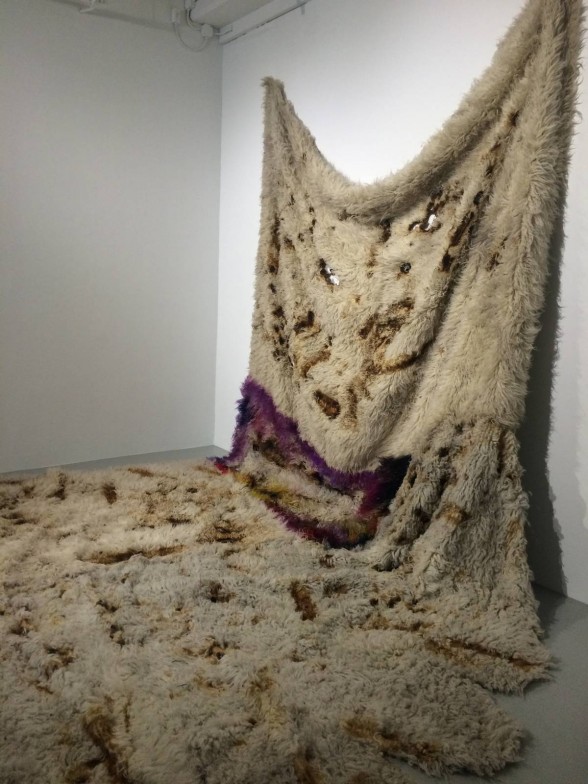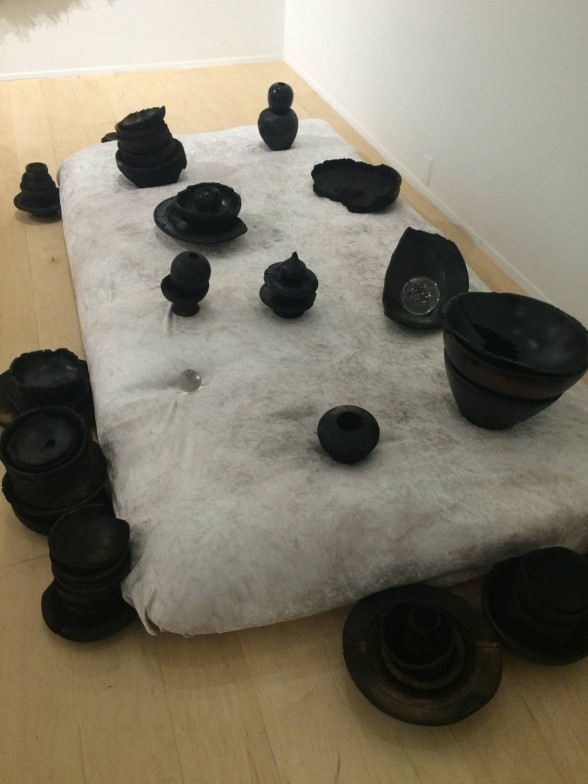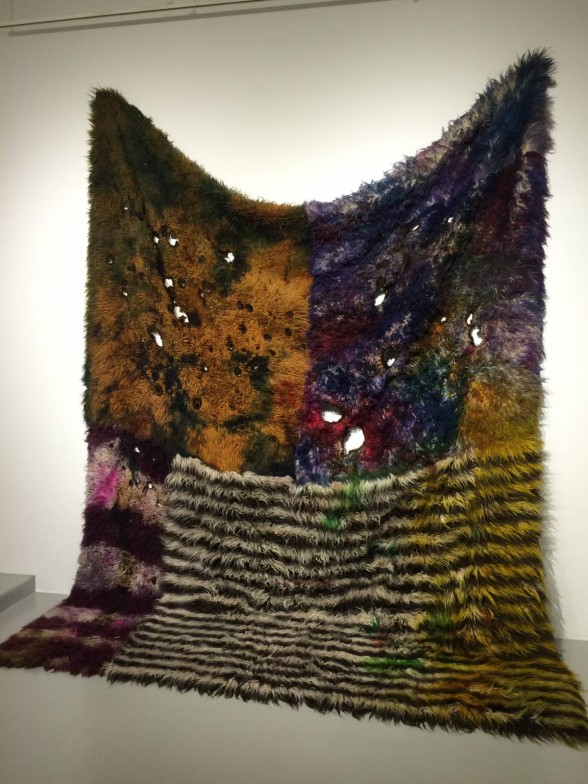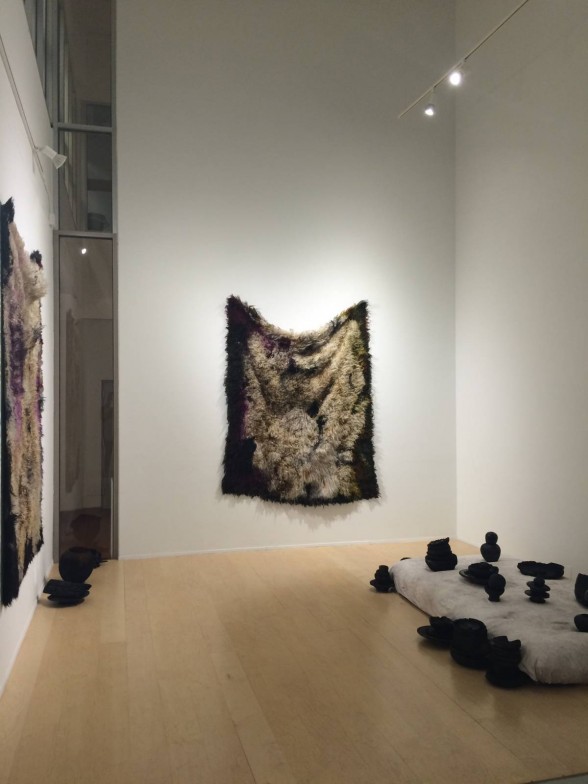[Alex gets close enough to touch some textile works that evoke and elevate primitive practices. — the Artblog editors]
At the University of the Arts’ Rosenwald-Wolf Gallery, the work of New York-based painter Anna Betbeze transforms the space into a colorful, heady environment somewhere between a post-apocalyptic campground and the depths of the deep blue sea. Her paintings–monumental textile works consisting of Greek flokati rugs, bath mats, and scraps of fur and wool–ooze from the walls on which they are hung, tapestries of battered refuse dotted with burns and stains. The composition and calculated deconstruction of the fibers creates lyrical arrangements, paired with scorched totemic sculpture to create scenes that comment on man’s very nature. Betbeze takes her viewer to the intersection of artifice and nature, taking from all aspects of the fine arts while allowing the elements to inform the outcome of each work.
Familiar, yet arcane

“Nine Planets in the Dark House,” the most austere of the generally bright pieces, neutral apart from its bursts of violet and the rust of its ash-ringed holes, splashes to the floor like poisonous sea foam, or like the pelt of a great rare bear shot too many times to be pristine. The texture of the work is unnerving in its reference to natural form, but disgusting in its closeness to human filth: moldy bath towels, mildew-stained carpets with careless cigarette burns. Like lichen peeled from a wet stone, the work does have a controlled shape, but what occurs on its surface suggests that it did, at some point, contain life force despite its ragged appearance.

In the corner of the gallery, the domestic scene of “Odalisque” is set out. Glass orbs and charred vessels sit on a nimbus-like cushion, surrounded by two tapestries and other small sculpture. This combination of sculpture, architecture, fiber art, and painting creates a formidable installation, meticulous in its composition, with references to ancient dwellings and religious altars. The purity of this work, juxtaposed with the large, bacterial works surrounding it, demonstrates that the elements used to dismantle the material of the fiber work can also create clear glass, snow-white velvet, and sleek, jet bowls.
Devotion and destruction

The work I was most impressed with was “Playtime,” because of the artist’s expertise in blurring her materials and destroying the line between what is natural and what is manmade. Some of the rug patchwork is uncannily similar to sea sponge or the delicates tendrils of an anemone, while some of it looks like fur throws ruined with spray paint. I felt the need to keep my distance in case certain stains were in fact toxic black mold, but had the impulse to touch the saturated color, tempted to see if the pigment would dye my fingers brilliant magenta or mustard-yellow.

The artist’s choice of material makes the nature of tapestries a metaphor for man’s own nature, in which there is a struggle between control and spontaneity, the sacred and profane. The skilled art of creating a flokati rug is paired with Betbeze’s destruction of it, through both chemical processes (burning with fire and acid) and the careful act of sewing. The role of the artist is to create, but it is also to destroy the limits of what defines their medium. These paintings do precisely that, leaving the wall on which they are hung to spread at the feet of the viewer, the surface of fur and fiber a study in color and texture. Paired with the small, blackened sculpture, there is reverence to the elements as well as a mastery of them.
New work by Anna Betbeze can be seen at Rosenwald-Wolf Gallery until April 11, 2015.








